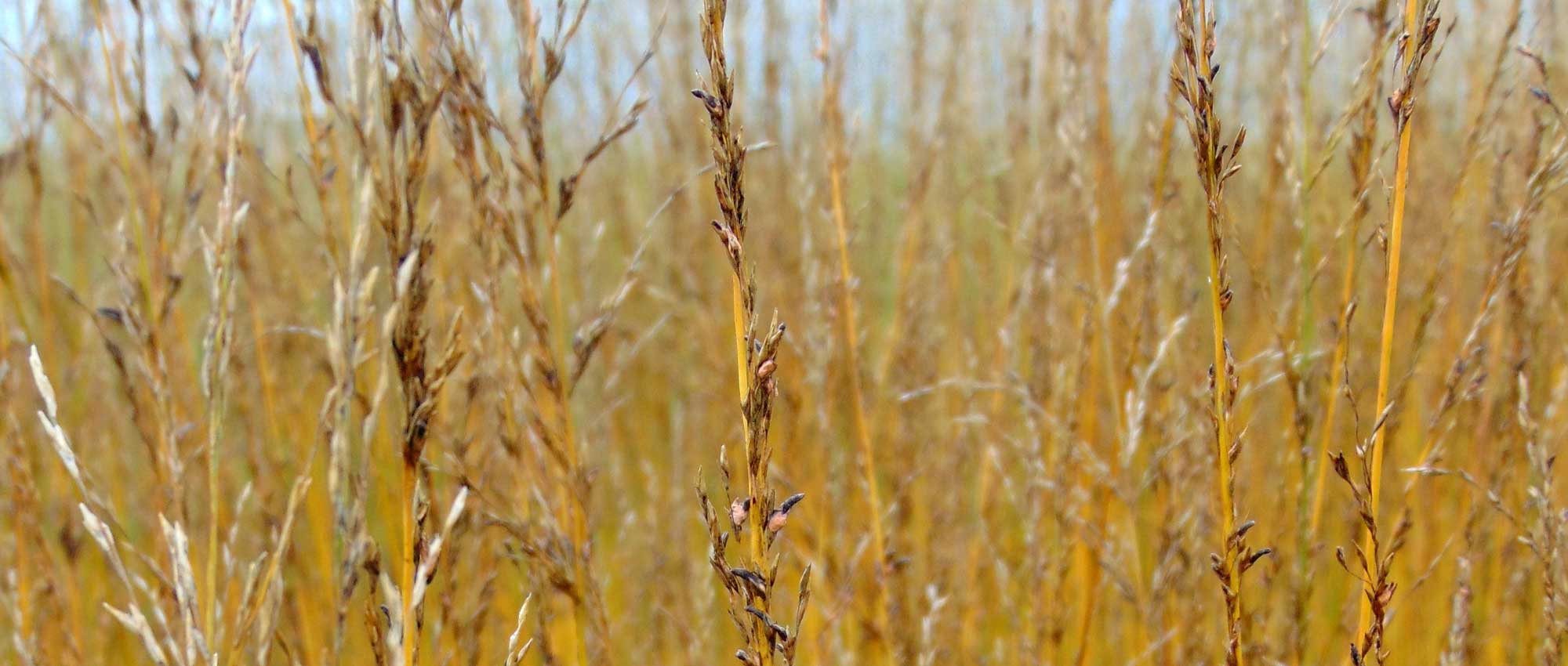
Molinie, Molinia caerulea: planting, division, pruning and care
Contents
Molinia in a nutshell
- Molinia is a hardy perennial ornamental grass essential for adding lightness to the garden
- It produces flowering in upright, transparent, and airy panicles that allow the eye to pass through
- Molinia is a plant that reveals all its splendour in autumn, offering very beautiful colours!
- It is a very hardy grass, whose stump does not sucker and which naturalises easily through sowing
- It lives for many years in the heavy, clay soils that it favours
A word from our Expert
The molinia is a very hardy and structurally significant perennial grass with beautiful linear and arching, trailing leaves. In spring, it produces a thick tuft of foliage, and then in mid-summer, it unfurls its large panicles, which will remain in place for a long time, revealing stunning golden hues at the end of the season… This is a plant that truly shines in autumn! The most common is the blue molinia, Molinia caerulea, but there are various varieties available, offering a choice of shades, forms, and heights. For example, discover the varieties ‘Moorhexe’, ‘Skyracer’, ‘Transparent’, or ‘Variegata’!
Molinia grasses are large herbs with impeccable graphics, bringing a very airy and light quality. They integrate well into both naturalistic borders and contemporary, graphic gardens, and are ideal for creating beautiful autumn scenes. The tallest and most imposing are Molinia arundinacea, which have a superb silhouette, perfect for structuring borders. Molinia grasses are so light and airy that they offer a transparent effect, allowing the eye to pass through them… Therefore, it is best to avoid planting them at the back of borders!
Molinia grasses thrive in cool, rather acidic soils. They can easily be planted at the edge of a pond. They require almost no maintenance: simply cut back the foliage at the end of winter, around March. They can be propagated by sowing or dividing clumps in spring.
Description and botany
Botanical data
- Latin name Molinia sp.
- Family Poaceae
- Common name Molinia, purple moor-grass, blue canche
- Flowering generally, between July and October
- Height between 40 cm and 2 m
- Exposure sun or partial shade
- Soil type ordinary, rather poor, cool, well-drained, preferably slightly acidic
- Hardiness between -15 and -20 °C
The molinies are perennial grasses, often large in size, and they offer flowering in panicles. They represent a very small group of plants, as there are only two species: Molinia caerulea and Molinia japonica. Only the blue molinie, Molinia caerulea, is cultivated in gardens, along with the varieties it has given rise to. It includes two subspecies: Molinia caerulea ssp. caerulea and Molinia caerulea ssp. arundinacea. The latter is taller, has broader leaves, and more spreading panicles than the caerulea subspecies.
The molinies are native to Europe, Asia, and North Africa (Molinia caerulea has also escaped gardens and naturalised in North America!). In the wild, they mainly grow in heathlands, peat moors, and forests, on moist and acidic soils. They are found in places where the water level varies regularly. In France, the blue molinie is present throughout the metropolitan territory. It grows up to 2,300 m in altitude in the Alps. The molinie is therefore a very hardy plant; it does not fear the cold.
The molinie has given its name to a particular plant formation, the moliniaies. The vegetation there is quite low, with a majority of molinies, which grow on moist or peaty, acidic soil, sometimes alongside reeds, thistles, heathers… In nature, clumps of molinie gradually form tussocks: the plant rises on a rounded mound made up of its old roots and an accumulation of dead leaves. Being very dense, the tussocks are fire-resistant!
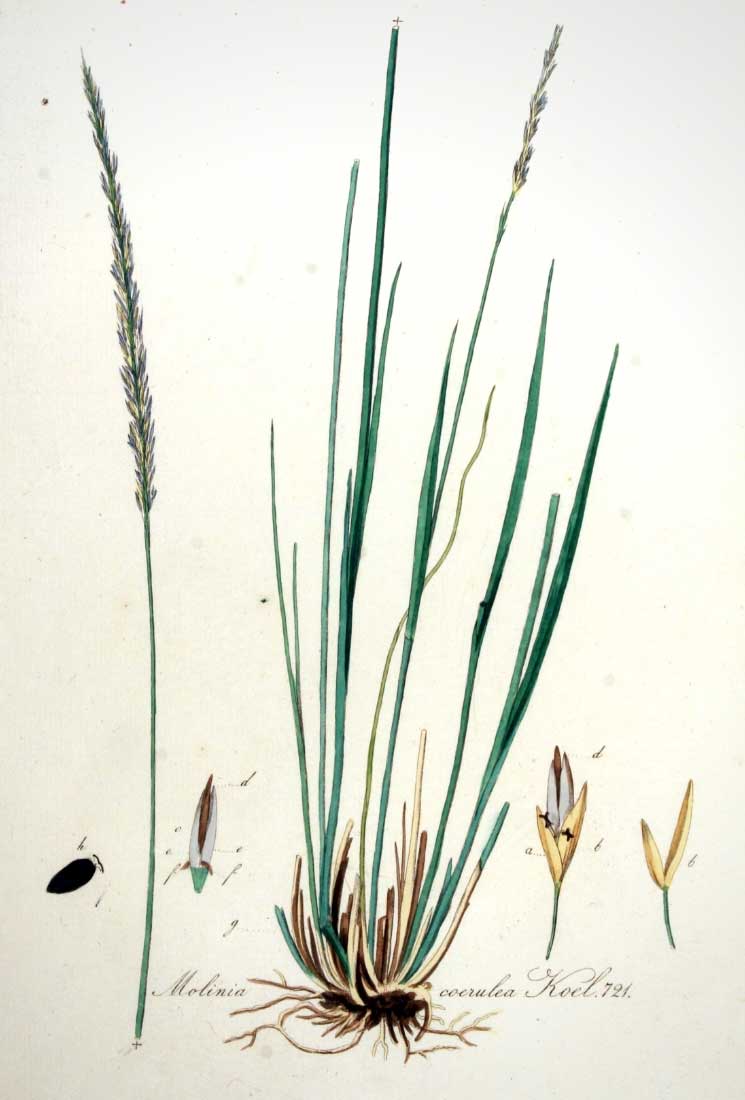
Molinia caerulea: botanical illustration
The molinie belongs to the Poaceae family! This is a very large family, which includes over 11,500 species, comprising other ornamental grasses, such as Pennisetum or Stipa, as well as herbs and cereals… It is a family of great economic and food importance, as it includes wheat, barley, maize, rice… Bamboo, true giant grasses, is also part of it. The Poaceae can be confused with the Cyperaceae (the family of papyrus and Carex) and the Juncaceae (the family of rushes), which also resemble large grasses.
The molinie was named in honour of Juan Ignacio Molina (1740 – 1829), a Jesuit priest and Chilean naturalist. Its species name, caerulea, means “dark blue”, referring to the foliage that takes on blue hues. The blue molinie is sometimes called Paleine or blue canche.
Molinies grow slowly and need a few years to become well developed. They are tufted plants that form erect clumps, quite tall. The more compact ones (like ‘Moorhexe’) measure only 40 cm in height, but many varieties reach 1.50 – 2 m tall… Those belonging to the arundinacea subspecies are the tallest. Among them, the variety ‘Windsaule’ can reach up to three metres in height!
The tallest molinies help to structure somewhat flat flower beds and can also be planted in isolation… While the shorter varieties benefit from being planted in masses to create a beautiful airy effect, like waves of clouds that undulate with the wind.
The molinie is quite bushy and compact at the base but very light in its aerial parts. It emits a multitude of upright stems, very close together, forming a dense tuft at the base. The stem of the molinies (like that of other grasses) is called “culm”. It is cylindrical and hollow.
The molinie flowers in summer and autumn: depending on the varieties, from June-July, and until September-October… or even December, for the later ones. The molinie has the advantage of offering a long-lasting flowering!
At the time of flowering, the molinies produce erect panicles, very airy, measuring between 10 and 40 centimetres in length. They consist of spikelets gathering the small flowers. The panicles can be quite loose and spreading, or narrower and more compact, with spikelets pressed against the flowering stem. They are so light and airy that they give the impression of dancing with the wind, undulating at the slightest breeze.
The stems that bear the panicles are fine and straight, unbranched. They seem fragile, delicate… and give the plant a very dainty appearance!
In general, the flowers are initially green, more or less purplish, but quickly change colour to become beige or brown. Under the rays of the sun, the spikelets take on quite subtle hues, first rather silvery, then golden yellow. Some varieties have particularly dark flowers, deep purple. The colours of the molinie are natural and warm. The panicles seem to shine under the sun’s rays, revealing beautiful reflections when it is low in the sky!
The molinie, and notably the variety ‘Transparent’, bears such light spikelets that they do not obstruct the view but allow the gaze to pass through, without hiding the background… It would be a mistake to place it at the back of flower beds! It is better to play with this transparency to achieve more sought-after visual effects.

The flowering of Molinia caerulea ‘Moorhexe’, that of Molinia caerulea (photo Serstef), and the detail of the flowers of Molinia caerulea ssp. arundinacea (photo Stefan.lefnaer)
The leaves of the molinie are fine and elongated, linear. They are quite typical leaves of the Poaceae. They stand upright and then droop towards the ground at their tips, creating a beautiful “cascade” effect. They are very flexible! The leaves often measure between 40 and 45 cm in length… But they can sometimes be much longer: up to 1 m long in the variety ‘Skyracer’.
The leaves are green but take on more or less bluish hues (this is why it is called “blue molinie”!). There are also variegated varieties, such as Molinia caerulea ‘Variegata’, which offers beautiful foliage green tinged with cream-white lines. The foliage of molinies generally turns soft yellow or orange in autumn! The molinie is perfect for creating beautiful late-season flower beds.
The stems and leaves of the molinie dry in autumn but remain decorative in winter. They should then be cut back around March. The plant will quickly develop new foliage.

The foliage of the varieties ‘Heidebraut’, ‘Variegata’ and ‘Windspiel’
Once flowering is finished, the molinie produces caryopses, a type of fruit quite characteristic of grasses (like wheat or maize grains). These are small dry fruits that do not open at maturity and contain a single seed. When they are fruiting, the spikes retain their decorative interest.
With the arrival of seeds after flowering, the inflorescences, stems, and leaves take on golden yellow to orange hues. The molinies remain interesting even in winter, due to their silhouette. They create beautiful effects with frost!
Read also
Grasses: which variety to choose?The main varieties of molinies
Derived from Molinia caerulea ssp. caerulea, they are ideal in large groups to create a very vapourous landscape, but they can also be planted at the edge or in front of a bed. They do not exceed 1 m in height, and their flowering is generally a bit denser than in other varieties.
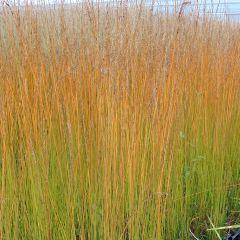
Molinia caerulea Edith Dudszus - Purple Moor-grass
- Flowering time September to November
- Height at maturity 90 cm
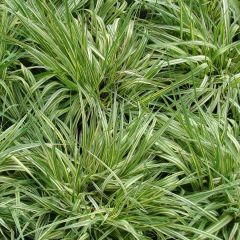
Molinia caerulea susbp. caerulea Variegata - Purple Moor-grass
- Flowering time August to November
- Height at maturity 45 cm
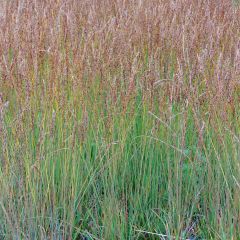
Molinia caerulea Moorhexe - Purple Moor-grass
- Flowering time September to November
- Height at maturity 45 cm
Very imposing, these varieties, derived from the subspecies arundinacea, are perfect for adding structure and height. They can easily be planted alone. Their flowering is generally more transparent and airy than in the previous group.
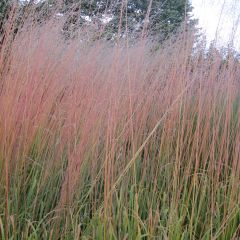
Molinia caerulea Windsaule - Purple Moor-grass
- Flowering time July to November
- Height at maturity 3 m
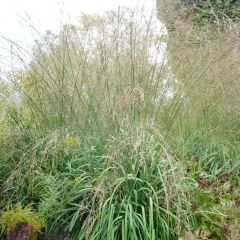
Molinia caerulea susbp. arundinacea Transparent - Purple Moor-grass
- Flowering time July to November
- Height at maturity 1,80 m
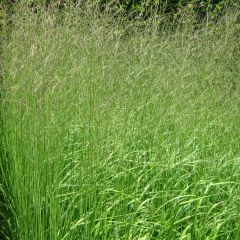
Molinia caerulea subsp. arundinacea Skyracer - Purple Moor-grass
- Height at maturity 2 m
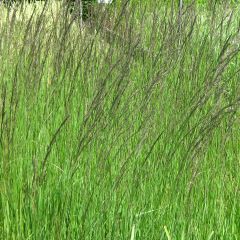
Molinia caerulea subsp. arundinacea Fontäne - Purple Moor-grass
- Flowering time July to November
- Height at maturity 1,80 m
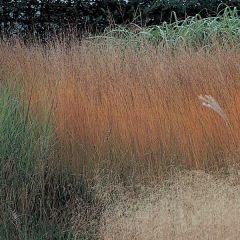
Molinia caerulea subsp. caerulea Heidebraut - Purple Moor-grass
- Flowering time September, October
- Height at maturity 1,60 m
Discover other Molinia
View all →Available in 2 sizes
Available in 3 sizes
Available in 2 sizes
Available in 1 sizes
Available in 2 sizes
Available in 1 sizes
Available in 2 sizes
Available in 1 sizes
Available in 2 sizes
Available in 2 sizes
Planting
Where to plant molinia?
Plant molinies in full sun or partial shade. Avoid extremes: do not place it in too dense a shade, nor in blazing sun. The plant looks much better when it is in good light than in dense shade. Sunlight can create stunning effects on its foliage and panicles: it’s best to take advantage of that! Similarly, dense shade would make the plant less vigorous and its flowering less generous.
Molinies prefer heavy, non-calcareous soils. They thrive very well in poor soils in nutrients, except for the varieties with variegated foliage, such as Molinia caerulea ‘Variegata’, which require richer soil. In the wild, molinies are mainly found in heathlands and turf moors, where the soil is indeed rather poor and acidic! Nevertheless, molinies are low-maintenance plants that adapt to many situations and show excellent results in heavy soils.
Molinies are very hardy plants (they withstand -20°C) that appreciate heavy, clayey, cool to moist soils. It is important that the soil does not dry out too much in summer. It is also better to plant them in a sheltered position from dry winds.
As molinies are rather tall plants, there is a tendency to want to place them at the back of borders: this is a mistake, as their panicles are very airy (especially in the variety ‘Transparent’) and allow the eye to pass through! It is better to play with this transparency by positioning them in front of other plants or decorative elements. Molinies can create a lovely effect along a path or walkway. As molinies form large, impressive clumps, they can be planted as solitary specimens, for example in the middle of a short grass meadow. Finally, molinia can be grown in a large pot or container. Preferably choose varieties that are not too tall.
Molinies take time to become well established and reach their full development. Thus, once in place, they do not appreciate being disturbed. It is best to avoid transplanting them.
When to plant?
You can plant it in autumn, in September-October, or in spring, around April. If you live in a particularly cold region, it is better to install it in spring.
How to plant?
We recommend maintaining a distance of 30 to 60 cm between plants.
- Start by placing the molinia in a basin filled with water. This helps to thoroughly rehydrate the root ball, improving the plant’s recovery.
- Dig a planting hole two to three times the size of the root ball.
- Remove the molinia from its pot and place it. The collar of the plant should be level with the soil: avoid burying the base of the stems!
- Then fill the planting hole with soil and gently firm it down.
- Water generously.
Molinies need time to become well established. In the first year, ensure that the soil does not dry out too much. Water a few times in the months following planting, to ensure the plant recovers well, and then in case of summer drought. Optionally, apply a mulch at their base: this will help maintain soil moisture for longer while preventing weeds from growing.
You can plant molinies in pots or containers, but choose a sufficiently large container, and favour compact varieties.
Also discover our advice sheet on planting grasses!
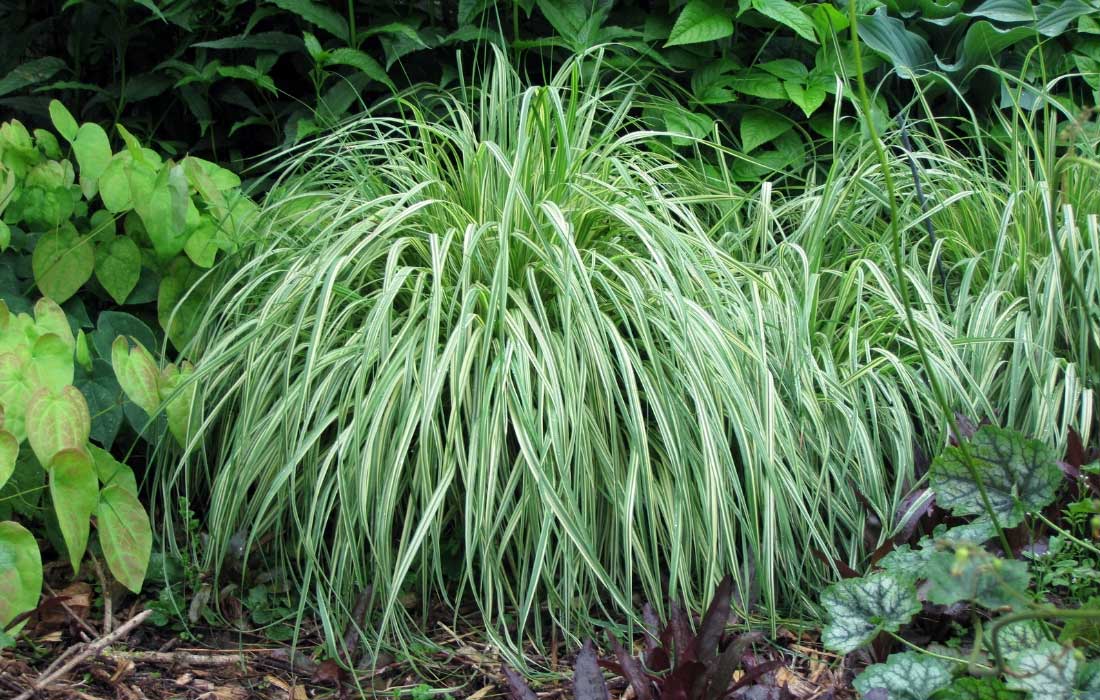
Molinia caerulea ‘Variegata’
Read also
Planting grassesCare and pruning of Molinies
Molinia requires virtually no maintenance! However, it is important to avoid letting the soil dry out too much in summer: do not hesitate to water if necessary. Be a bit more vigilant if you are growing molinia in a pot, as the substrate dries out more quickly.
At the end of winter, around March, prune the molinia back to the ground. It will produce new leaves in spring.
Molinia is a hardy plant. It does not need to be protected for winter. It is also not susceptible to diseases or pests.
Leave the dried inflorescences in place during winter. They add volume and remain quite decorative, especially when covered in frost.
Propagating
We recommend clump division, although it is also possible to sow molinia.
Clump Division
The best time to divide molinia is in spring, around April. Be aware that the stump of molinia is very dense, and on older specimens, it can become lignified, making the operation require a lot of strength. Equip yourself with a very sharp spade or an axe to divide the stump.
- Carefully dig up a clump of molinia, as these plants do not like to be disturbed! Go around the plant with a spade, digging wide enough, then lift the clump from the soil.
- Separate it into three or four fragments using a very sharp spade or an axe.
- Replant them immediately, after preparing the ground. You can also pot them initially, then plant them in the ground once they have developed their root system.
- Water generously.
Continue to water in the following weeks.
Associating the Molinia
With their light and structured silhouette, molinies allow for the creation of form contrasts alongside shorter plants with broad, thick leaves (bergenia, hosta…). Just like at the Plume Garden, where grasses break up more compact and regular forms, they can be used with boxwoods or yews that have been pruned, to bring a beautiful effect of movement and lightness. However, keep in mind that the effect in the garden will be completely different if you choose the fairly compact molinies (subspecies caerulea) or the larger ones! The latter will be perfect for enhancing a flowerbed!
The molinie is a plant that truly reveals itself in autumn, both in its silhouette and its colours, enhanced by the rays of the setting sun. It is therefore ideal for creating a stunning late-season scene, in association with autumnal flowerings, decorative fruits and flamboyant foliage! Pair it with other plants that take on copper, golden, or orange hues. For example, enjoy Japanese maples (Acer palmatum), dogwoods, and serviceberries. For flowers, focus on rudbeckias, Eupatorium maculatum, dahlias, Sedum spectabile, Aconitum carmichaelii… You can also install some shrubs with decorative berries, such as Callicarpa bodinieri or Nandina domestica. Place other grasses, like Calamagrostis… Get inspired by this autumnal atmosphere. The flowerbed you create will remind you that the year is not yet over!
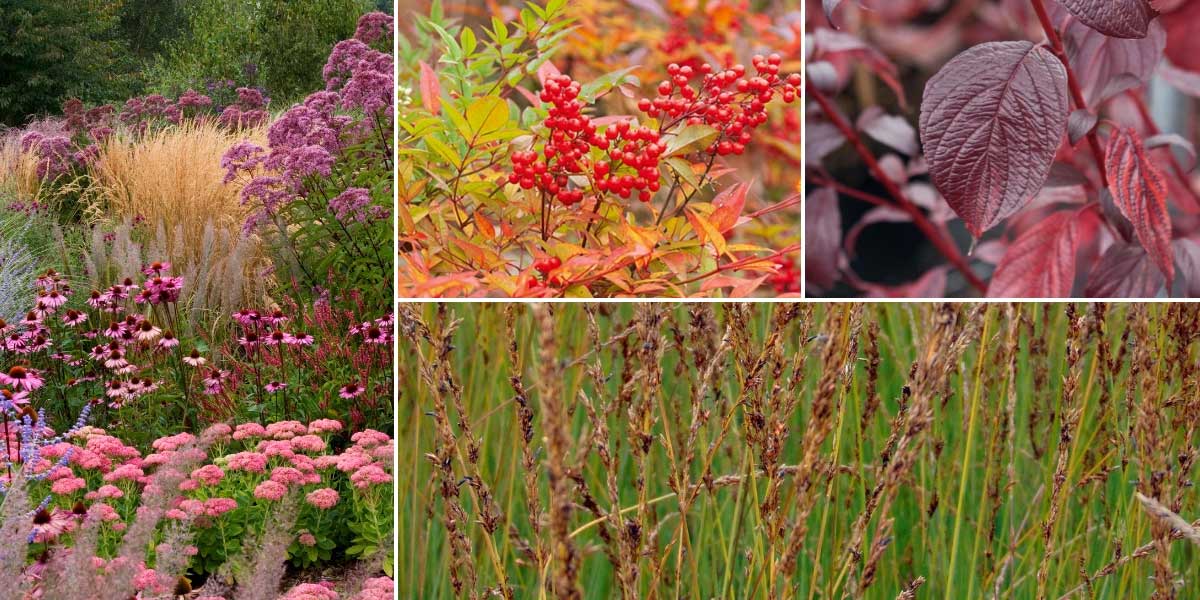
You can use molinies to create a beautiful autumn scene! Combined with Sedum ‘Autumn Joy’, Echinacea purpurea ‘Rubinstern’, Eupatorium purpureum (Designer: Judy Pearce / Photo: Clive Nichols – MAP) / Nandina domestica / Cornus alba ‘Siberian Pearls’ / Molinia caerulea ‘Moorhexe’
As the molinie prefers rather moist soils, you can plant it by the edge of a pond, alongside ferns (osmunda, Matteuccia…), gunneras, Macleaya, rushes and reeds. This will surely give you a very natural effect! Prefer tall grasses, such as Carex pendula, Phragmites australis, Phalaris arundinacea… and install some flowering plants, like meadowsweet, purple loosestrife, and Cirsium rivulare!
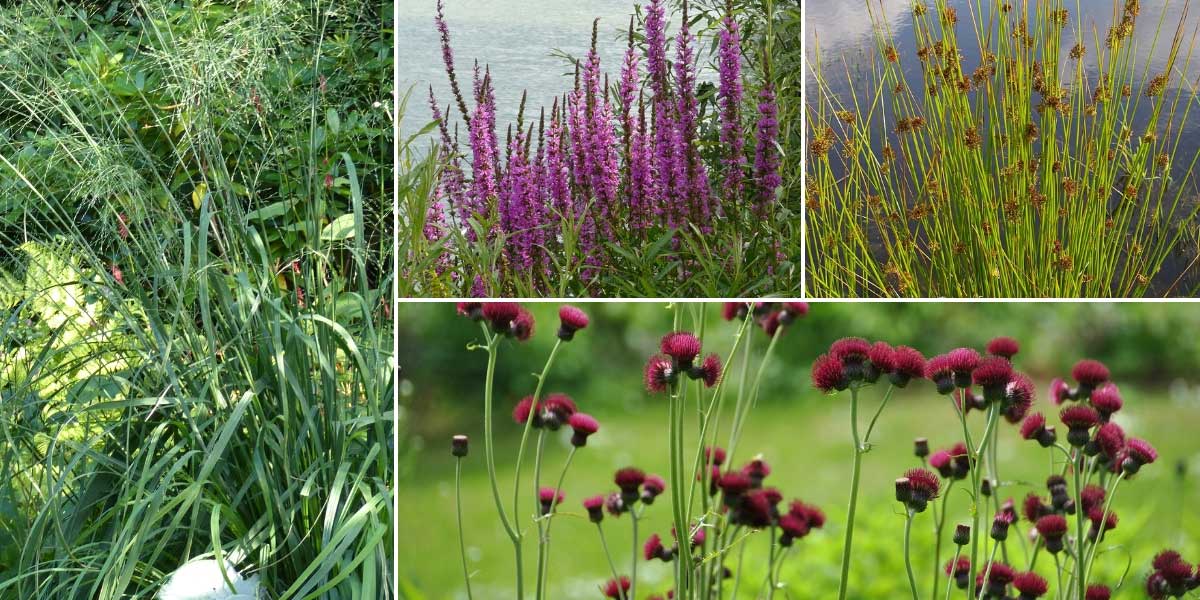
You can also create a quite natural scene around a pond! Molinia caerulea ‘Transparent’ / Lythrum salicaria (photo Manfred Heyde) / Juncus effusus (photo Christian Fischer) and Cirsium rivulare ‘Atropurpureum’ (photo Jean Jones)
Molinies also find their place in a graphic garden, alongside other grasses and decorative foliage: opt for ferns, ophiopogons, hostas, and Acer palmatum. You can pair them with other structural plants, such as horsetails and bamboos, to create a contemporary garden that is both understated and elegant. Enjoy the superb foliage of the fern Dryopteris erythrosora.
Do not hesitate to combine molinies with other grasses, such as Stipa pennata, Miscanthus or Calamagrostis! You will achieve a light and airy flowerbed that catches the rays of the sun. By adding a few plants with very free habits and airy flowers nearby, your garden will adopt a naturalistic style. Choose for example Verbena hastata, Gaura lindheimeri, knautias, flax (Linum perenne), Veronicastrum… Also enjoy the persicarias, especially Persicaria polymorpha!
→ Discover more association ideas with Molinie in our advice sheet!
Did you know?
- Wickerwork
Molinia can be used in spiralled wickerwork: the stems, both flexible and strong, are gathered and spiralled, then sewn with bramble bark. This allows for the creation of trivets, baskets, and bowls.
Useful resources
- Discover our range of molinies!
- Our advice sheet – Grasses: Which variety to choose?
- Our advice sheet – Planting grasses
- An article by Michael – Grasses: those that are pruned, those that are trimmed
Frequently asked questions
-
Should I cut back the molinia at the end of winter?
Yes, molinia is one of those grasses that should be cut back to the ground at the end of winter, around March. You will quickly see new foliage appear.
- Subscribe!
- Contents
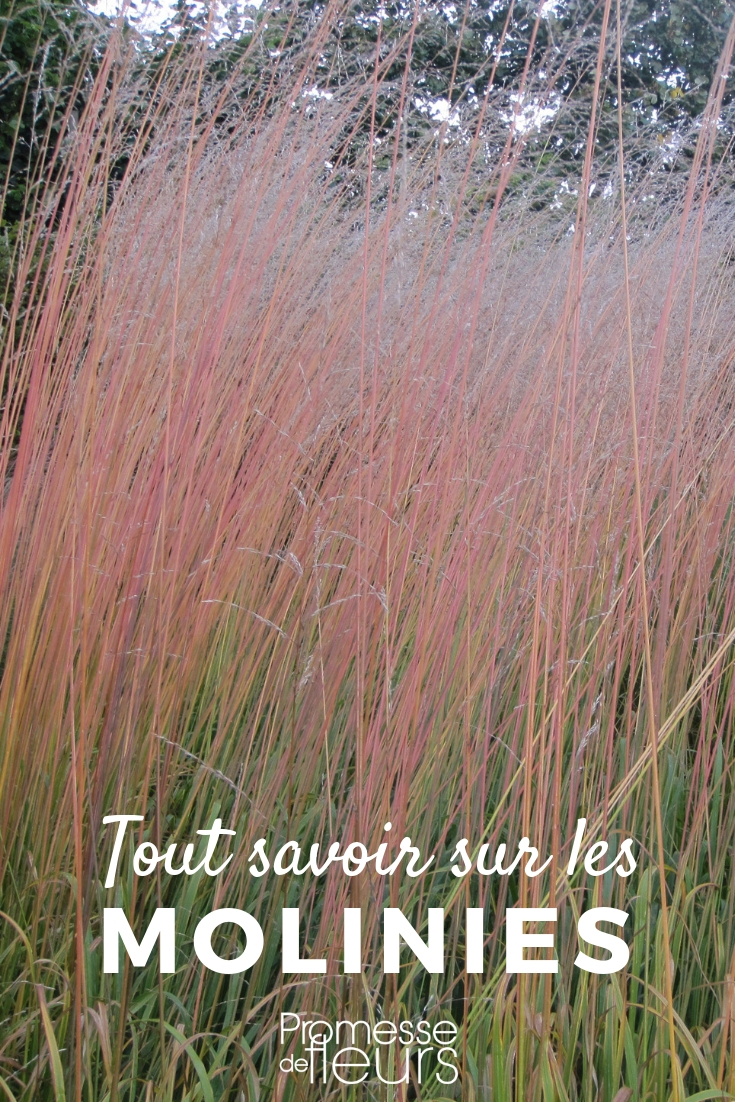


































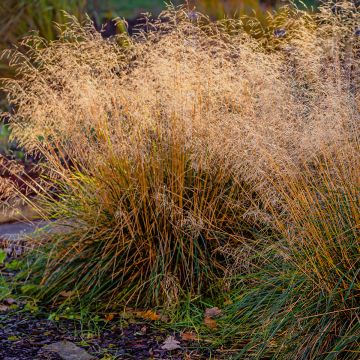
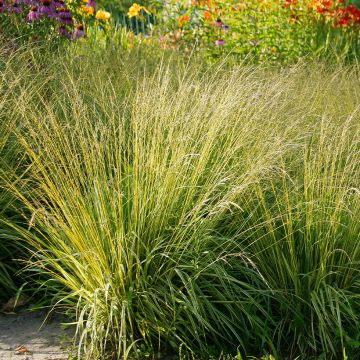
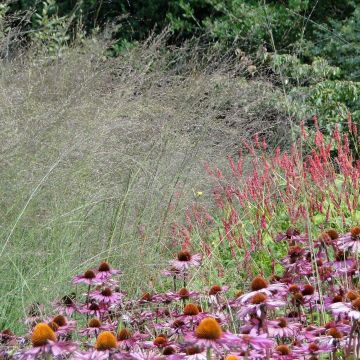




Comments